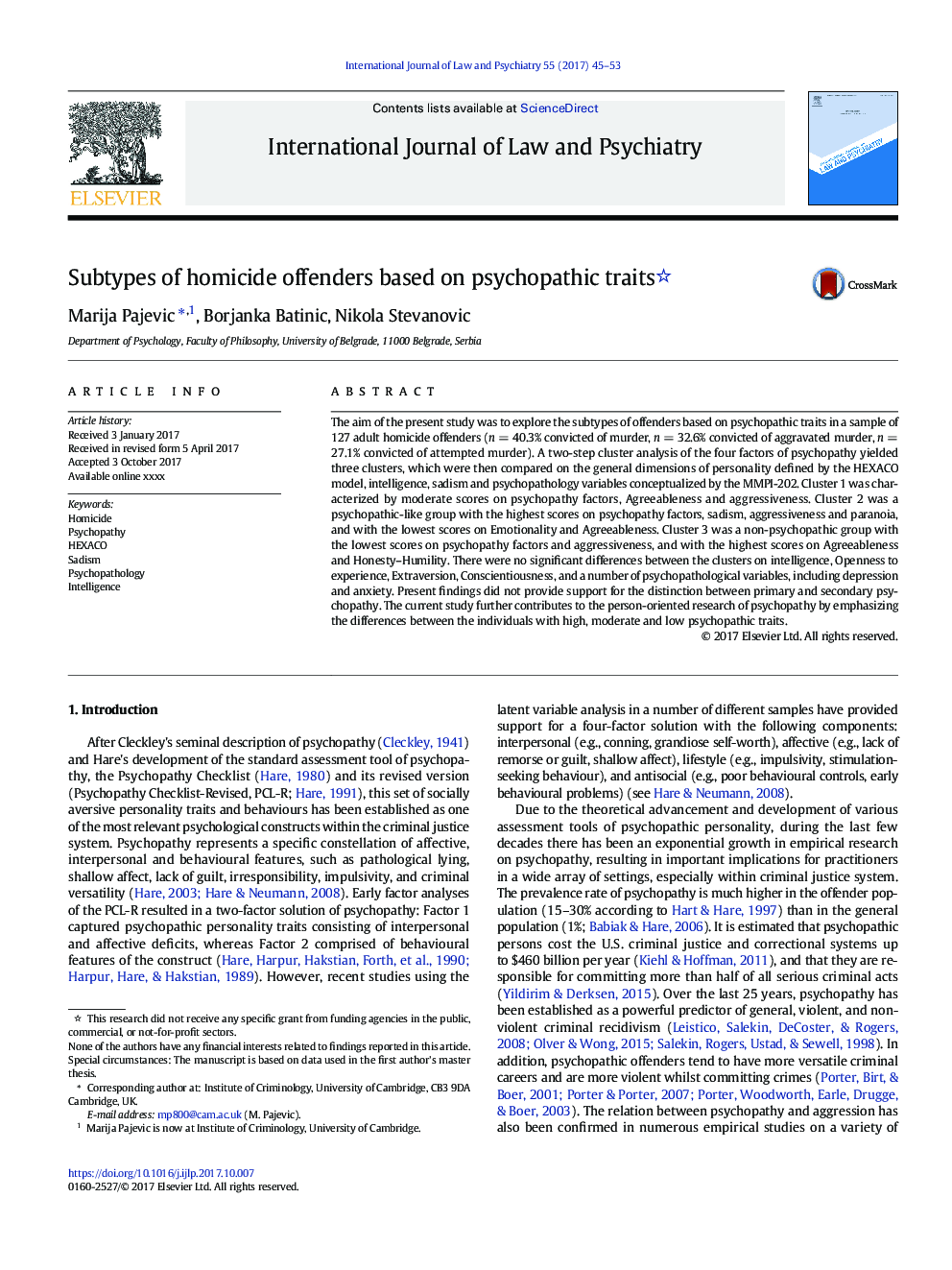| Article ID | Journal | Published Year | Pages | File Type |
|---|---|---|---|---|
| 6554562 | International Journal of Law and Psychiatry | 2017 | 9 Pages |
Abstract
The aim of the present study was to explore the subtypes of offenders based on psychopathic traits in a sample of 127 adult homicide offenders (n = 40.3% convicted of murder, n = 32.6% convicted of aggravated murder, n = 27.1% convicted of attempted murder). A two-step cluster analysis of the four factors of psychopathy yielded three clusters, which were then compared on the general dimensions of personality defined by the HEXACO model, intelligence, sadism and psychopathology variables conceptualized by the MMPI-202. Cluster 1 was characterized by moderate scores on psychopathy factors, Agreeableness and aggressiveness. Cluster 2 was a psychopathic-like group with the highest scores on psychopathy factors, sadism, aggressiveness and paranoia, and with the lowest scores on Emotionality and Agreeableness. Cluster 3 was a non-psychopathic group with the lowest scores on psychopathy factors and aggressiveness, and with the highest scores on Agreeableness and Honesty-Humility. There were no significant differences between the clusters on intelligence, Openness to experience, Extraversion, Conscientiousness, and a number of psychopathological variables, including depression and anxiety. Present findings did not provide support for the distinction between primary and secondary psychopathy. The current study further contributes to the person-oriented research of psychopathy by emphasizing the differences between the individuals with high, moderate and low psychopathic traits.
Related Topics
Health Sciences
Medicine and Dentistry
Forensic Medicine
Authors
Marija Pajevic, Borjanka Batinic, Nikola Stevanovic,
